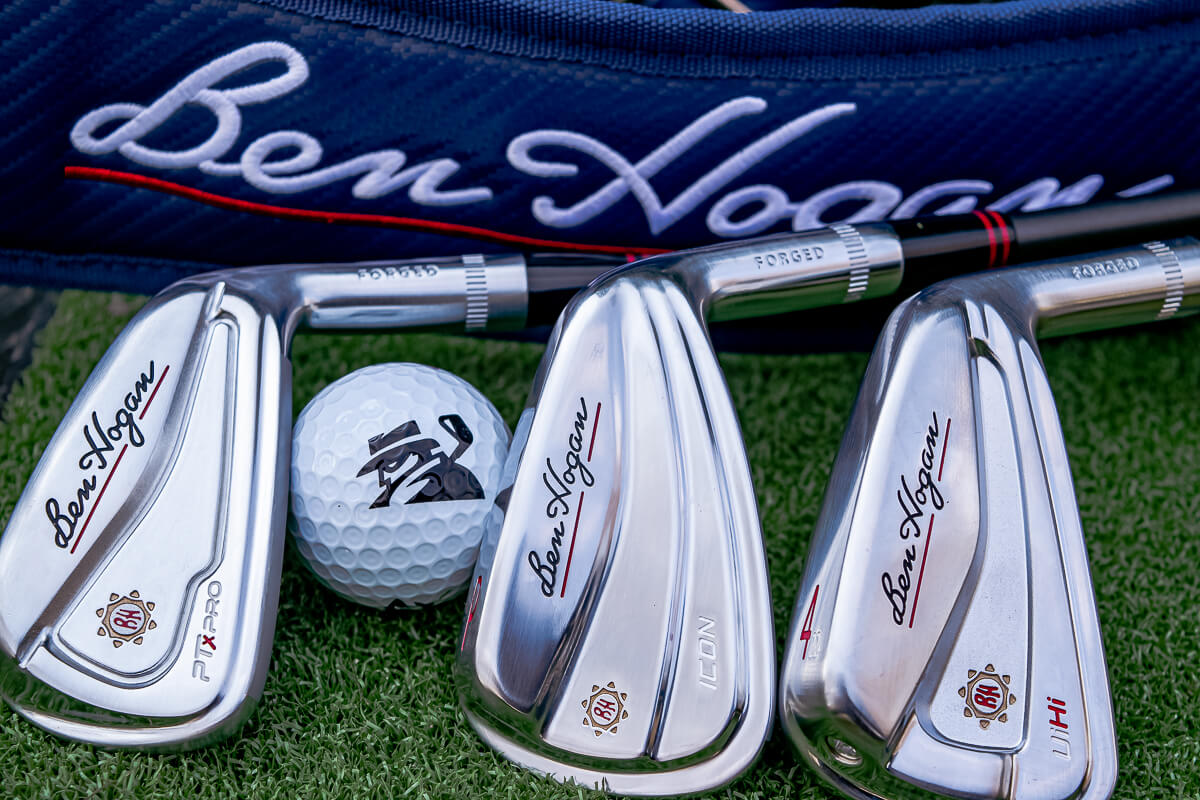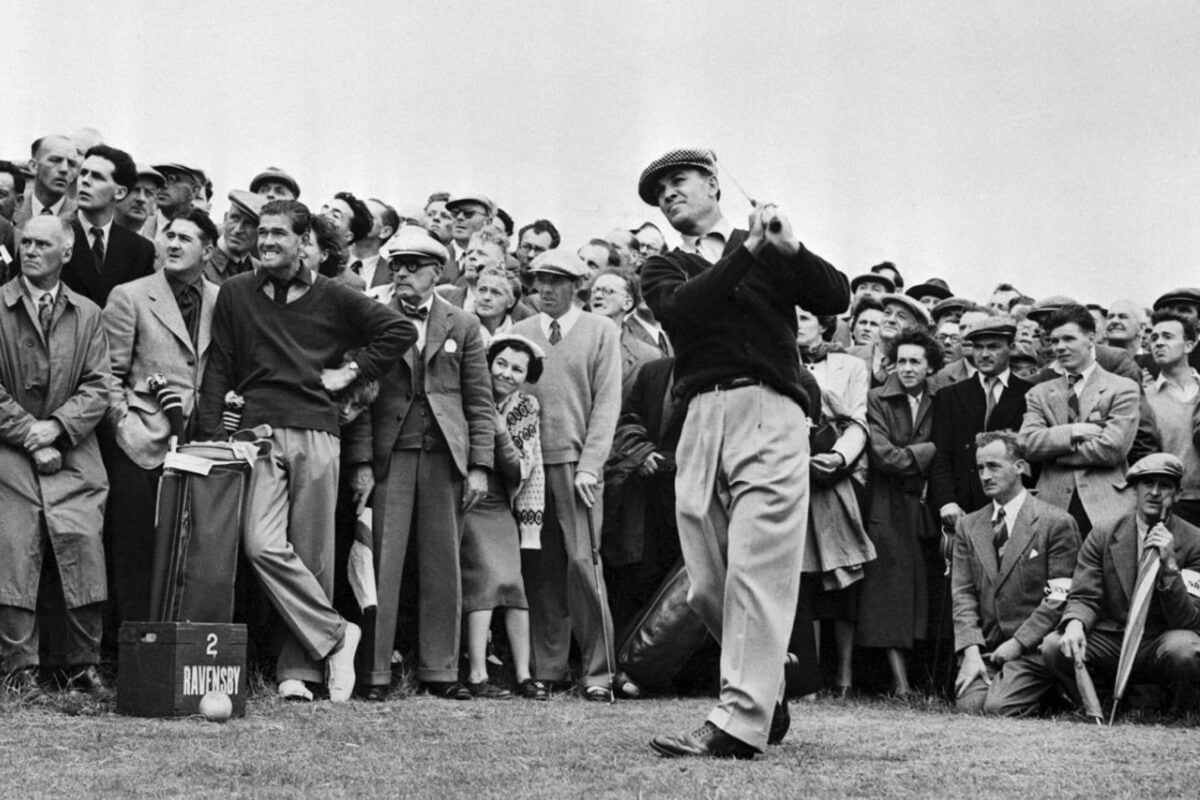Golfing News & Blog Articles
Ben Hogan Golf Is Back Again
The Ben Hogan Golf Equipment Company, left for dead just over a year ago, is coming back one more time.
As MyGolfSpy first reported on Twitter, Simon Millington, owner of Las Vegas-based Golf Brands, Inc., has struck a licensing deal with Hogan brand owner Perry Ellis to resurrect Hogan. Over the past year, Millington has brought long-gone brands MacGregor, RAM and Zebra back to life. And the opportunity to take on Hogan is something he couldn’t pass up.
“I like to hunt these things down a little bit,” Millington tells MyGolfSpy. “So when they had the problems last year, I knew Perry Ellis and got straight to them, literally immediately.”

Millington says it took months to put the deal together as others were interested in taking over the brand as well. It all came together in late September.
“We’ve got all the old Hogan inventory,” says Millington. “There’s some inventory in China, which is current stock and a couple of new models. That gives us instant product and we’ll start working on new products over time.”
Ben Hogan Golf: Getting Back In The Game
Millington and his sons are working to create a new website and business structure before the wheels of commerce can start rolling again. He says they should be ready to roll within weeks.
“We’re getting into a busy market,” explains Millington. “We’re as good as anything and, ultimately, we have to prove that and get that message across to the consumer.”

As with the reborn MacGregor, RAM and Zebra brands, Hogan will again be direct-to-consumer with a pricing structure to match. The Hogan selling proposition will remain the same: premium, high-quality forged irons, metalwoods and putters at factory-direct pricing.
“We want people wowed when they get their product,” he says. “That’s the respect we want to earn. We have to earn it.”
The new Hogan will face many of the same challenges as Sub 70, Takomo and other DTC club brands. First and foremost is the preconceived notion that golf equipment that costs that much less than the “big names” can’t possibly be as good.
“We have to get the product right,” says Millington. “That’s the thing that drives us. Quality matters and then it’s about elevating the brand. But to do that we’ve got to get the product right.”

Millington has relationships with top independent club designers. Austie Rollinson designed the MacGregor MT-86 irons for Millington between gigs at Callaway and Titleist. And, not coincidently, the foundry in China that forges the Hogan heads also makes the heads for MacGregor.
The Up and Down History of Ben Hogan Golf
As mentioned, the latest iteration of the Ben Hogan Golf Company closed its doors on July 25 of last year. It was, coincidentally, the 25th anniversary of Ben Hogan’s death. The original company was started by Hogan himself in 1953 with its stated goal to make every club look like a piece of fine jewelry.

Since then, the company has had a wild history of ups and downs. Hogan sold the company to AMF in 1960. It was acquired by corporate raider Irwin Jacobs in 1984 as part of his hostile takeover of AMF. Jacobs sold it to the Japanese company Cosmo World which would eventually own Pebble Beach Golf Links.
With sales booming following the release of the Hogan Edge, Cosmo sold Hogan to Virginia businessman Bill Goodwin who promptly shut down the Hogan plant in Fort Worth, Texas, and moved operations to Richmond, Va. Five years later, Goodwin sold Hogan to Spalding.

Spalding went bankrupt in 2003 and was acquired by Callaway. Callaway mothballed the brand in 2008 before selling it to Perry Ellis in 2012. Three years later, Terry Koehler would resurrect the Hogan brand back in Fort Worth but, by early 2017, the company would file for bankruptcy again.
Chicago investment firm ExWorks Capital acquired Hogan and reopened it in the summer of 2017. Hogan at the time was one of, if not the first, premium golf equipment OEMs operating exclusively in the direct-to-consumer space.

Hogan thrived during COVID-19, operating profitably with sales growing every year. ExWorks Capital, however, filed for bankruptcy in the spring of 2022. Funding for Hogan dried up, forcing the company to shut its doors.
For good … or so it seemed.
What Does the Future Hold for Ben Hogan Golf?
Ben Hogan said the most important shot in golf is the next one. And, for some reason, the Ben Hogan Golf Equipment Company keeps getting up off the mat for one more shot.
“We are starting with this massive brand equity,” says Millington. “It’s been chipped away a bit over the years but there is this desire. People still want to have Ben Hogan. We just need to find more of them.”

Even in its heyday in the late ‘80s and early ‘90s, Hogan was a niche brand. It was known for its premium forged blades and the innovative (for its time) Hogan Edge. Don’t expect it to be anything different under Millington. Hogan won’t threaten any of the Big Five OEMs or even the next tier of OEMs such as Mizuno, Srixon, PXG and Wilson.
As with his other resurrected brands, all Millington really needs is to sell enough Hogan clubs to make it worth his while. He doesn’t have investors to please or stockholders to cater to. He does have to keep Perry Ellis happy but that’s the cost of doing business as a licensee.

And The Bigger Question …
Does golf really need another direct-to-consumer company? Maybe more importantly, does golf need the Ben Hogan Company? Wouldn’t it be better just to let it rest in peace?
“Hogan could just die,” says Millington. “Some people will care. The real Hogan enthusiasts won’t want to see that but it won’t make a lot of difference in anybody’s life. I think it’s the same with any brand, really.”
Understand that Callaway, TaylorMade, PING, COBRA and Titleist sell in the neighborhood of 80 percent of all the premium golf equipment sold on this here planet. If everyone except for those five went out of business tomorrow, we’d still have plenty of gear to choose from.

Direct-to-consumer companies offer consumers a value-laden choice. Their equipment ranges anywhere from serviceable to exceptional, with pricing that screams value. The challenge for consumers is to accept that something that much less expensive can perform like the big names. And the fact the big names continue to dominate is a tribute in large part to branding and, to a lesser extent, big-money R&D.
And even though it can be lumped into a pile labeled “Just Another DTC Brand,” Hogan is different because, well, it’s Hogan. Hogan the man and Hogan the company mean something to golfers of a certain age. The hard part for the new Hogan is getting that mystique to mean something to enough new golfers to make the whole venture worthwhile.

“As long as we do a good job and keep elevating the brand, people will respect the brand and the quality it stood for,” says Millington. “And it’s our job to make that better.”
And the most important shot is the next one.
Postscript: If you want to learn more about the history of the Ben Hogan Company, check out this three-part podcast by the Society of Golf Historians. It covers the full history of the Hogan company from its birth in 1953 through its most recent rebirth.
The post Ben Hogan Golf Is Back Again appeared first on MyGolfSpy.

